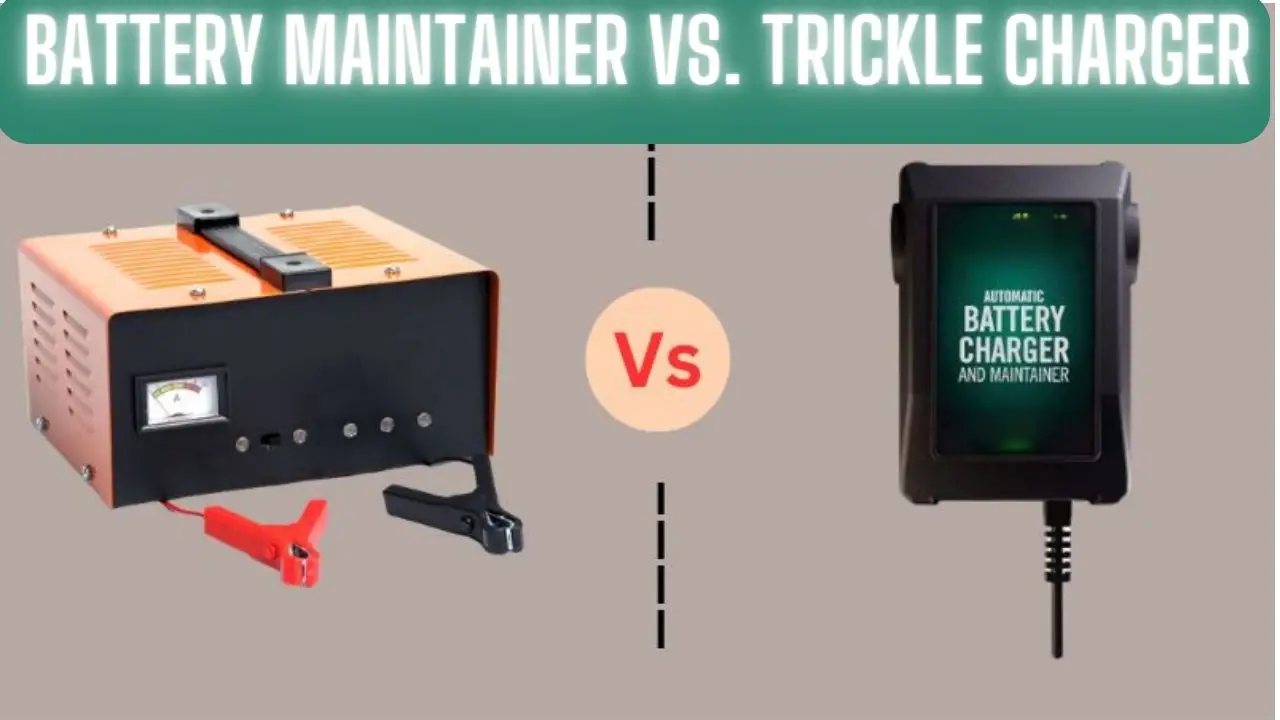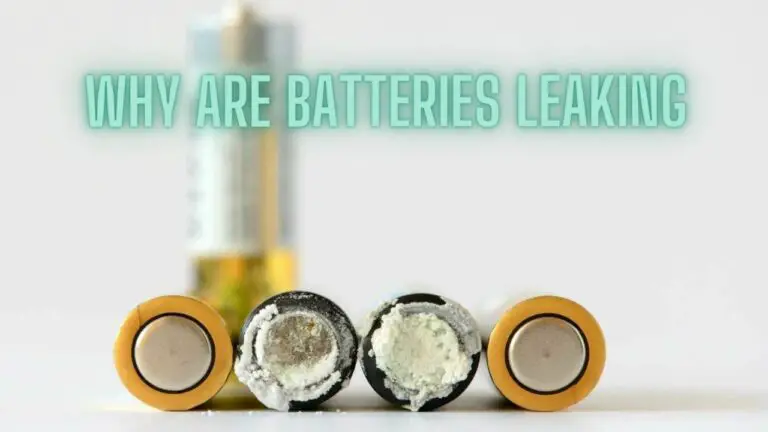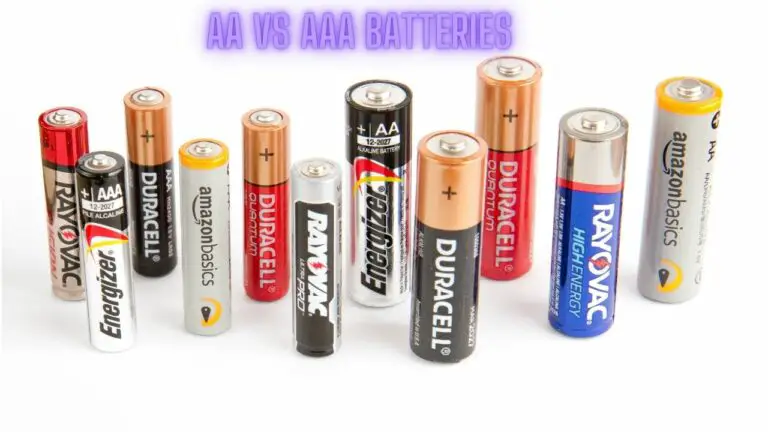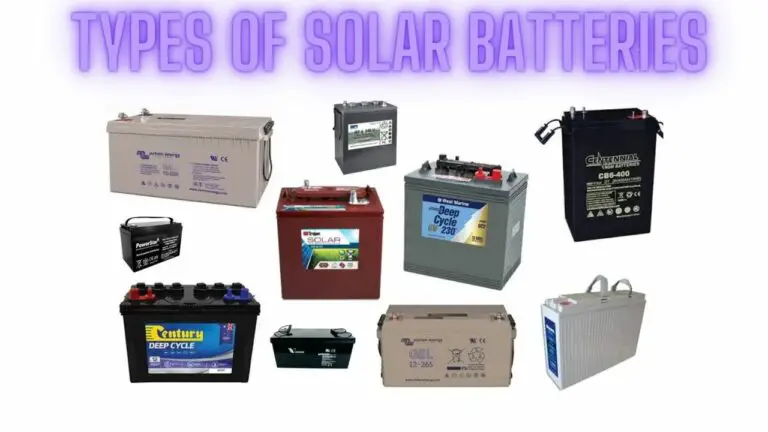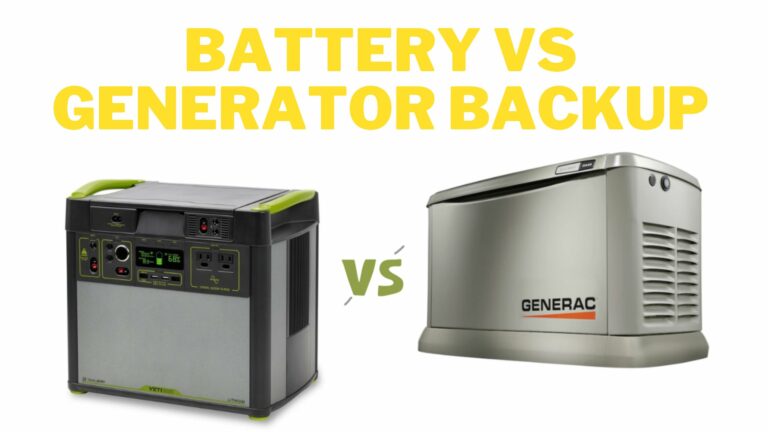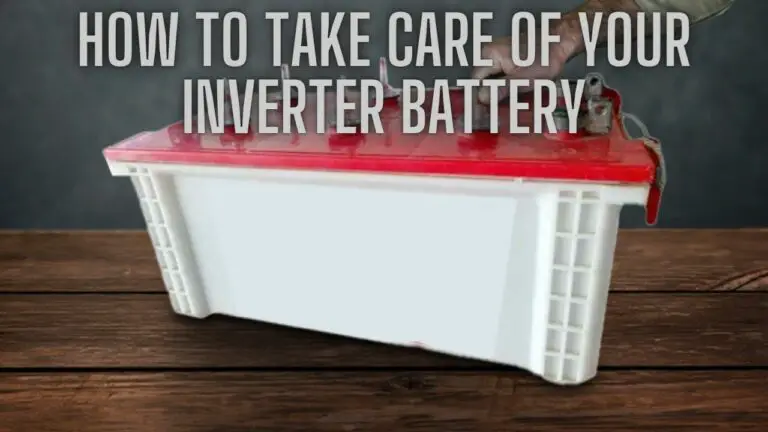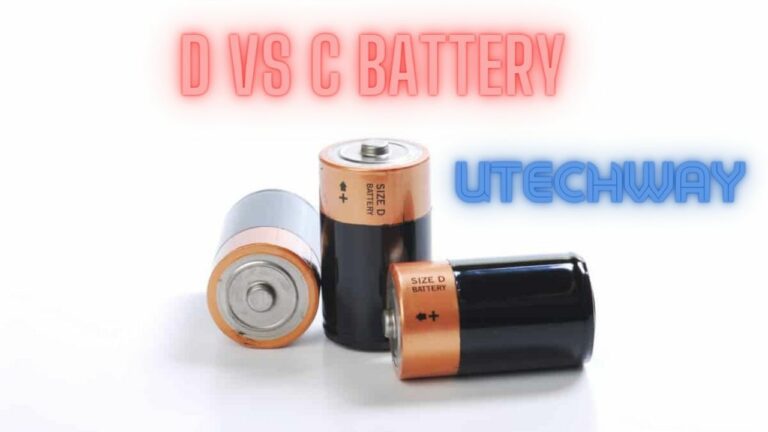Battery Maintainer vs. Trickle Charger: Unraveling the Difference
Introduction
Maintaining the health of your vehicle’s battery is crucial for ensuring reliable starts and optimal performance. Battery maintainers and trickle chargers are two devices designed to help keep your batteries charged and ready to go, but they have distinct purposes and functionalities. In this article, we’ll delve into the differences between battery maintainers and trickle chargers, helping you make an informed choice based on your needs.
Battery Maintainer: Keeping Batteries Healthy
A battery maintainer, also known as a battery tender or float charger, is a device designed to keep batteries charged and in optimal condition during periods of inactivity. Its primary purpose is to prevent battery discharge and degradation that can occur when batteries are left unused for extended periods. Unlike traditional battery chargers, which can overcharge and damage batteries if left connected for too long, battery maintainers are specifically engineered to deliver a low-level charge continuously without overcharging.
Key Points:
- Prevention of Battery Discharge: Battery maintainers ensure that batteries retain their charge over time, particularly in applications where they are not regularly used, such as seasonal vehicles, boats, motorcycles, or standby power systems.
- Prolonging Battery Life: By maintaining a consistent charge level and preventing deep discharges, battery maintainers help extend the lifespan of batteries, ultimately saving money on replacement costs.
- Convenience and Readiness: Batteries connected to maintainers are always ready for immediate use, eliminating the need for time-consuming recharging or jump-starting.
- Safety and Protection: Battery maintainers incorporate safety features to prevent overcharging, reverse polarity, and short circuits, ensuring the safety of both the battery and the surrounding environment.
Overall, the purpose of a battery maintainer is to preserve the health and functionality of batteries, ensuring they remain reliable and ready to perform when needed.
How Battery Maintainers Work:
Battery maintainers operate using sophisticated charging algorithms designed to deliver a low-level charge to batteries over extended periods without overcharging or damaging them. Here’s a breakdown of the key components and processes involved:
- Trickle Charging: Battery maintainers typically employ a trickle charging method, which provides a low, constant current to the battery. This slow charging rate compensates for self-discharge and ensures that the battery remains topped up without excessive stress.
- Voltage Regulation: Battery maintainers incorporate voltage regulation circuitry to monitor the battery’s voltage level constantly. When the voltage drops below a certain threshold, indicating a decrease in charge, the maintainer initiates charging to bring the battery back to its optimal level.
- Float Charging: Many battery maintainers include a float charging stage once the battery reaches full charge. During float charging, the maintainer provides a maintenance-level charge to compensate for any self-discharge, keeping the battery at its peak condition without overcharging it.
- Monitoring and Adjustments: Advanced battery maintainers may include microprocessors or smart charging technology to monitor the battery’s condition continuously. These devices can adjust the charging parameters based on factors such as temperature, battery type, and state of charge, optimizing the charging process for maximum efficiency and safety.
- Safety Features: Battery maintainers are equipped with safety features to protect both the battery and the charging system. These may include overcharge protection, reverse polarity protection, short-circuit protection, and temperature compensation to prevent damage in case of adverse conditions or user error.
- Indicators and Alerts: Many battery maintainers come with LED indicators or digital displays to provide real-time feedback on the charging status and battery condition. Some models also feature audible alarms or alerts to notify users of any issues or abnormalities during the charging process.
By combining these elements, battery maintainers ensure that batteries remain charged, healthy, and ready for immediate use, even during prolonged periods of inactivity. Their intelligent charging algorithms and safety features make them indispensable tools for preserving the lifespan and performance of batteries across various applications.
Applications of Battery Maintainers
Battery maintainers, also known as battery tenders, are versatile devices that serve various applications to keep batteries in optimal condition. Here are some common applications of battery maintainers:
- Automotive Storage: Battery maintainers are commonly used to keep the batteries of classic cars, vintage vehicles, motorcycles, and seasonal vehicles in good shape during periods of storage. These vehicles are often not used for extended periods, and a battery maintainer ensures that the battery remains charged and healthy.
- Recreational Vehicles (RVs) and Boats: RVs, campers, and boats are often used seasonally or intermittently. Battery maintainers prevent the batteries from losing charge and sulfating during the off-season, ensuring they are ready for use when needed.
- Motorcycles: Motorcycles that are not used regularly can experience battery discharge. Battery maintainers help keep the motorcycle battery charged and extend its lifespan.
- Lawn and Garden Equipment: Battery-powered lawn mowers, tractors, and other garden equipment may have batteries that need to be maintained during the off-season. Battery maintainers prevent these batteries from deteriorating.
- Power Sports Vehicles: ATVs, snowmobiles, jet skis, and similar vehicles are often stored during certain seasons. Battery maintainers are used to keep their batteries charged and in good condition.
- Emergency Backup Systems: Batteries used in backup power systems, such as uninterruptible power supplies (UPS) and emergency lighting, need to be ready for use at all times. Battery maintainers ensure these batteries are fully charged and operational.
- Security Systems: Batteries in security systems, such as home alarm systems, need consistent power to function properly. Battery maintainers ensure these batteries are ready to provide backup power in case of outages.
- Recreational Equipment: Battery-powered recreational equipment like golf carts, electric scooters, and electric bicycles benefit from battery maintainers to prevent battery degradation during periods of inactivity.
- Vintage Electronics: Battery maintainers can be used to keep vintage electronic devices, such as radios and portable record players, operational by preventing the deterioration of internal batteries.
- Remote Monitoring Stations: In remote locations, where access to the equipment is limited, battery maintainers help ensure that the batteries in monitoring and communication equipment remain charged and functional.
- Off-Grid Systems: Batteries used in off-grid solar power systems, wind power systems, and remote cabins can be maintained using battery maintainers to ensure reliable power storage.
- Fleet Vehicles: Businesses with fleets of vehicles, such as delivery trucks or construction equipment, can use battery maintainers to ensure that vehicles that are not in use are ready for operation when needed.
Battery maintainers play a vital role in extending the lifespan of batteries and ensuring they are always ready to provide power. Their applications are diverse and cover a wide range of industries and equipment types, making them an essential tool for maintaining reliable power sources.
Benefits of Using a Battery Maintainer
Using a battery maintainer offers a range of benefits, making it an essential tool for anyone looking to preserve the health and functionality of their batteries. Here are some key advantages:
- Prolongs Battery Life: By keeping batteries consistently charged and preventing deep discharges, battery maintainers help extend the lifespan of batteries. This ultimately reduces the frequency of battery replacements, saving both time and money.
- Prevents Battery Discharge: Batteries left unused for extended periods are prone to self-discharge, which can lead to sulfation and irreversible damage. Battery maintainers counteract this by providing a continuous low-level charge, ensuring that batteries remain at optimal levels of charge readiness.
- Ensures Readiness for Immediate Use: Equipment and vehicles equipped with batteries connected to maintainers are always ready for immediate use. This is particularly valuable for vehicles in seasonal storage or emergency backup systems, where reliability is critical.
- Convenience: Battery maintainers require minimal setup and maintenance, providing a hassle-free solution for battery maintenance. Once connected, they operate automatically, requiring little to no user intervention.
- Safe Charging: Battery maintainers incorporate safety features such as overcharge protection, reverse polarity protection, and short-circuit protection to prevent damage to batteries and charging systems. This ensures safe and reliable charging operations.
- Versatility: Battery maintainers are compatible with a wide range of battery types, including lead-acid, AGM, gel cell, and lithium-ion batteries. This versatility makes them suitable for various applications, from automotive and marine to recreational and industrial use.
- Cost-Effective: Investing in a battery maintainer can yield significant cost savings in the long run by prolonging the lifespan of batteries and reducing the need for premature replacements.
- Environmental Benefits: By extending the lifespan of batteries and reducing the need for replacements, battery maintainers contribute to environmental sustainability by minimizing the disposal of old batteries and the associated environmental impact.
Overall, the benefits of using a battery maintainer are numerous, ranging from prolonging battery life and ensuring readiness for immediate use to providing convenience, safety, and cost savings. Whether for personal vehicles, recreational equipment, or critical backup systems, battery maintainers play a crucial role in maintaining the health and performance of batteries across various applications.
Usage Tips and Best Practices
Here are some usage tips and best practices for effectively using a battery maintainer:
- Choose the Right Maintainer: Select a battery maintainer that is compatible with the type and size of the battery you intend to maintain. Different maintainers may have specific features or charging profiles tailored to different battery chemistries (e.g., lead-acid, AGM, gel, lithium-ion), so choose one that suits your needs.
- Read the Manual: Familiarize yourself with the manufacturer’s instructions and recommendations provided in the user manual. Pay attention to safety precautions, connection procedures, and any specific usage guidelines outlined by the manufacturer.
- Ensure Proper Connections: Before connecting the battery maintainer, ensure that the battery terminals are clean, free of corrosion, and securely tightened. Follow the correct polarity (positive to positive, negative to negative) when connecting the maintainer to the battery to avoid damaging the charging system.
- Provide Adequate Ventilation: Place the battery and maintainer in a well-ventilated area during charging to dissipate any heat generated during the charging process. Avoid charging batteries in confined or poorly ventilated spaces to minimize the risk of overheating.
- Regular Inspection: Periodically inspect the battery and maintainer for signs of damage, corrosion, or wear. Check the connections, cables, and housing for any abnormalities and address any issues promptly to ensure safe and reliable operation.
- Follow Charging Recommendations: Adhere to the recommended charging profiles and voltage settings specified by the manufacturer for optimal charging performance. Avoid using generic or incompatible charging profiles that may lead to overcharging or undercharging.
- Monitor Charging Progress: Keep an eye on the charging progress using the LED indicators or digital displays provided on the maintainer, if available. Monitor the voltage and charging status regularly to ensure that the battery is being maintained properly.
- Disconnect When Fully Charged: Once the battery reaches full charge, disconnect the maintainer to prevent overcharging. Some maintainers may transition to a float or maintenance mode automatically once the battery is fully charged, but it’s still good practice to disconnect the maintainer if it won’t be monitored regularly.
- Store Properly When Not in Use: When not in use, store the battery maintainer in a cool, dry place away from direct sunlight and moisture. Proper storage helps prolong the lifespan of the maintainer and ensures its readiness for future use.
- Follow Maintenance Schedule: Follow the recommended maintenance schedule outlined by the manufacturer to keep the battery and maintainer in optimal condition. This may include periodic inspections, cleaning, and testing to ensure reliable performance over time.
By following these usage tips and best practices, you can maximize the effectiveness and longevity of your battery maintainer while ensuring safe and reliable battery maintenance operations.
Trickle Charger: Slow and Steady Charging
A trickle charger is a device designed to provide a low-level and continuous charge to a battery over an extended period. Its primary purpose is to maintain the charge of a battery when it is not in use or when the load on the battery is minimal. Trickle chargers are often used for batteries in vehicles, motorcycles, boats, RVs, lawn mowers, and other equipment that may sit idle for long periods.
Key Points:
- Continuous Low-Level Charging: Trickle chargers deliver a small amount of current to the battery, typically at a rate of 1 to 2 amps, to compensate for self-discharge and maintain the battery’s charge level.
- Prevention of Battery Drain: Trickle chargers prevent the battery from losing its charge over time, which can occur due to self-discharge, parasitic loads, or electronic systems in the vehicle.
- Extended Battery Life: By keeping the battery consistently charged, trickle chargers help prolong its lifespan by preventing sulfation and other forms of battery degradation that can occur during periods of inactivity.
- Readiness for Immediate Use: Equipment or vehicles equipped with batteries connected to trickle chargers are always ready for immediate use, eliminating the need for jump-starting or recharging before use.
- Maintenance During Storage: Trickle chargers are commonly used during seasonal storage of vehicles or equipment to ensure that the battery remains in good condition and ready for use when needed.
- Safe and Controlled Charging: Trickle chargers typically incorporate safety features such as voltage regulation, short-circuit protection, and overcharge protection to prevent damage to the battery and ensure safe charging operations.
Overall, the purpose of a trickle charger is to maintain the charge of a battery over time, ensuring its readiness for immediate use and prolonging its lifespan, particularly during periods of inactivity.
How Trickle Chargers Work:
Trickle chargers work by delivering a continuous and low-level charge to a battery over an extended period. Here’s how they operate:
- Low-Level Charging: Trickle chargers provide a constant but low amperage charge to the battery. This charging rate is typically between 1 to 2 amps, which is much lower than the fast charging rates used to quickly charge a battery.
- Voltage Regulation: Trickle chargers incorporate voltage regulation circuitry to monitor the battery’s voltage level continuously. When the voltage drops below a certain threshold, indicating a decrease in charge, the charger initiates the charging process to bring the battery back to its optimal level.
- Continuous Monitoring: Trickle chargers continually monitor the battery’s state of charge to ensure that it remains within the desired range. They adjust the charging rate as needed to prevent overcharging, which can damage the battery.
- Float Charging: Once the battery reaches its full charge level, many trickle chargers transition into a float charging mode. In float charging mode, the charger provides a maintenance-level charge to compensate for any self-discharge that may occur over time. This helps to keep the battery at its peak condition without overcharging it.
- Safety Features: Trickle chargers are equipped with safety features to protect both the battery and the charging system. These may include overcharge protection, reverse polarity protection, short-circuit protection, and temperature compensation to prevent damage in adverse conditions.
- Indicator Lights: Many trickle chargers come with indicator lights to provide feedback on the charging status. These lights may indicate when the charger is actively charging the battery, when the battery is fully charged, or if there is an issue with the charging process.
Overall, trickle chargers work by delivering a continuous and controlled charge to the battery, ensuring that it remains at an optimal level of charge readiness without overcharging or damaging the battery. Their low-level charging approach makes them ideal for maintaining batteries during periods of inactivity, such as seasonal storage or intermittent use.
Applications of Trickle Charger
Trickle chargers, with their slow and steady charging process, find utility in various scenarios where batteries need to be charged or maintained. Here are some common applications of trickle chargers:
- Vehicle Storage: Trickle chargers are commonly used for vehicles that are stored for extended periods, such as classic cars, motorcycles, and recreational vehicles. They help prevent battery discharge and ensure the vehicles start smoothly when needed.
- Seasonal Equipment: Garden tractors, lawnmowers, snow blowers, and other seasonal equipment benefit from trickle chargers during off-seasons to maintain battery health.
- Boats and Marine Applications: Boats, yachts, and other marine vessels often use trickle chargers to keep their batteries charged and ready for use, especially during periods of low activity.
- Power Sports: Trickle chargers are useful for maintaining batteries in ATVs, snowmobiles, jet skis, and similar recreational vehicles that are used seasonally.
- Emergency Equipment: Emergency equipment like backup power systems, emergency lighting, and portable generators can be kept ready for action by using trickle chargers to maintain their battery banks.
- Vintage Vehicles and Equipment: Trickle chargers are ideal for maintaining the batteries in vintage cars, trucks, motorcycles, and machinery, ensuring they remain operational for occasional use.
- Remote Locations: Trickle chargers are used in remote areas or off-grid locations where consistent power supply is not available. They can keep communication devices, monitoring systems, and sensors operational.
- Battery Recovery: Trickle chargers can help recover deeply discharged batteries by slowly replenishing their charge over time, preventing damage that rapid charging could cause.
- Temporary Storage: If a vehicle or equipment is not in use for a short period, using a trickle charger can ensure the battery remains in good condition.
- Maintenance Charging: Trickle chargers are commonly used for maintaining batteries in vehicles that aren’t driven frequently, such as secondary cars, backup generators, and antique vehicles.
- Electric Tools: Cordless power tools, such as drills and saws, that are used infrequently can have their rechargeable batteries maintained by trickle chargers.
- Recreational Equipment: Golf carts, electric scooters, and electric bicycles can have their batteries kept in optimal condition with the use of trickle chargers.
- Security Systems: Security systems, alarms, surveillance cameras, and access control systems often rely on batteries as backup power sources. Trickle chargers ensure these systems stay functional.
- Remote Sensors: Trickle chargers can keep batteries charged in remote sensor installations for weather monitoring, wildlife tracking, and environmental research.
- Unattended Devices: Devices that run on batteries and operate in unattended settings, such as remote data loggers, can benefit from trickle chargers to ensure prolonged operation.
Trickle chargers play a vital role in maintaining battery health and ensuring reliable performance in a variety of applications. Their slow and gradual charging method prevents overcharging and maintains the battery’s longevity, making them a valuable tool for preserving power sources.
Benefits of Using a Trickle Charger
Using a trickle charger offers several benefits, particularly for maintaining the health and longevity of batteries. Here are some key advantages:
- Prevents Battery Discharge: Trickle chargers provide a continuous low-level charge to batteries, preventing self-discharge over time. This ensures that batteries remain fully charged and ready for immediate use, even during long periods of inactivity.
- Prolongs Battery Life: By maintaining a consistent charge level and preventing deep discharges, trickle chargers help extend the lifespan of batteries. This reduces the risk of sulfation and other forms of battery degradation, ultimately saving money on battery replacements.
- Convenience and Readiness: Equipment and vehicles equipped with batteries connected to trickle chargers are always ready for immediate use. This eliminates the need for jump-starting or recharging before use, saving time and hassle.
- Ideal for Seasonal Use: Trickle chargers are particularly useful for vehicles and equipment that are used seasonally, such as boats, motorcycles, RVs, and lawn mowers. They ensure that the battery remains in optimal condition during periods of storage and is ready to use when needed.
- Safe Charging: Trickle chargers incorporate safety features such as overcharge protection, reverse polarity protection, and short-circuit protection to prevent damage to batteries and charging systems. This ensures safe and reliable charging operations.
- Versatility: Trickle chargers are compatible with a wide range of battery types, including lead-acid, AGM, gel cell, and lithium-ion batteries. This versatility makes them suitable for various applications, from automotive and marine to recreational and industrial use.
- Cost-Effective: Investing in a trickle charger can help save money in the long run by prolonging the lifespan of batteries and reducing the need for premature replacements. This makes trickle chargers a cost-effective solution for battery maintenance.
- Environmental Benefits: By extending the lifespan of batteries and reducing the need for replacements, trickle chargers contribute to environmental sustainability by minimizing the disposal of old batteries and the associated environmental impact.
Overall, the benefits of using a trickle charger include prolonging battery life, ensuring readiness for immediate use, convenience, safety, versatility, cost savings, and environmental sustainability. Whether for personal vehicles, recreational equipment, or critical backup systems, trickle chargers play a crucial role in maintaining the health and performance of batteries across various applications.
Usage Tips and Best Practices
- Choose the Right Charger: Select a trickle charger that is compatible with the type and size of the battery you intend to maintain. Ensure that the charger’s output voltage and current ratings match the requirements of your battery.
- Read the Manual: Familiarize yourself with the manufacturer’s instructions and recommendations provided in the user manual. Pay attention to safety precautions, connection procedures, and any specific usage guidelines outlined by the manufacturer.
- Inspect the Battery: Before connecting the trickle charger, inspect the battery for any signs of damage, corrosion, or leaks. Ensure that the battery terminals are clean, free of corrosion, and securely tightened.
- Connect Properly: Follow the correct polarity (positive to positive, negative to negative) when connecting the trickle charger to the battery to avoid damaging the charging system. Double-check the connections to ensure they are secure.
- Provide Ventilation: Place the battery and trickle charger in a well-ventilated area during charging to dissipate any heat generated. Avoid charging batteries in confined or poorly ventilated spaces to minimize the risk of overheating.
- Monitor Charging Progress: Keep an eye on the charging progress using the charger’s indicator lights or display, if available. Monitor the voltage and charging status regularly to ensure that the battery is being maintained properly.
- Disconnect When Fully Charged: Once the battery reaches full charge, disconnect the trickle charger to prevent overcharging. Some chargers may automatically switch to a maintenance or float mode once the battery is fully charged, but it’s still a good practice to disconnect the charger if it won’t be monitored regularly.
- Regular Maintenance: Periodically inspect the battery and charger for signs of damage or wear. Clean the battery terminals and charger connections as needed to ensure good electrical contact. Replace any damaged components or cables promptly.
- Avoid Overcharging: While trickle chargers are designed to provide a low-level charge continuously, it’s essential to avoid overcharging the battery. Follow the manufacturer’s recommendations for charging duration and frequency to prevent damage to the battery.
- Store Properly When Not in Use: When not in use, store the trickle charger in a cool, dry place away from direct sunlight and moisture. Proper storage helps prolong the lifespan of the charger and ensures its readiness for future use.
By following these usage tips and best practices, you can maximize the effectiveness and longevity of your trickle charger while ensuring safe and reliable battery maintenance operations.
Choosing Between a Battery Maintainer and a Trickle Charger:
1. Storage vs. Recovery:
- Choose a battery maintainer if you’re looking to keep a stored vehicle’s battery in peak condition over an extended period.
- Opt for a trickle charger when you need to recharge a partially or fully discharged battery before using the vehicle.
2. Automation:
- Battery maintainers often have smart features that automatically adjust the charging rate and switch to a maintenance mode.
- Trickle chargers might require manual monitoring to prevent overcharging once the battery is fully charged.
3. Battery Health:
- Battery maintainers are designed to maintain battery health by preventing overcharging and undercharging.
- Trickle chargers can be effective in recovering a battery’s charge, but they might not provide the same level of long-term maintenance.
4. Usage Frequency:
- Battery maintainers are suitable for vehicles that are stored for prolonged periods.
- Trickle chargers are useful when you need to charge a battery after it has been sitting unused for some time.
Battery Maintainer vs. Trickle Charger FAQS
What’s the main difference between a battery maintainer and a trickle charger?
A battery maintainer is designed to keep a battery at an optimal charge level over an extended period, preventing undercharging and overcharging. A trickle charger, on the other hand, slowly recharges a battery that has been partially or fully discharged.
Which device is better for maintaining battery health during long storage periods?
A battery maintainer is better suited for maintaining battery health during long storage periods. It provides a low and consistent current to prevent overcharging and keep the battery ready for use.
Can I use a battery maintainer to charge a dead battery?
A battery maintainer is not ideal for charging a completely dead battery. It’s designed for maintaining healthy batteries rather than recovering deeply discharged ones. A trickle charger is better for charging a dead or heavily discharged battery.
Is a trickle charger safe for long-term use?
Using a trickle charger for long-term charging can risk overcharging a battery if not monitored properly. Trickle chargers don’t typically have automatic monitoring to switch to maintenance mode once the battery is charged, so caution is required.
Are battery maintainers and trickle chargers suitable for all types of batteries?
Both devices are generally suitable for lead-acid batteries, including conventional flooded batteries and AGM (absorbent glass mat) batteries. However, some advanced battery types like lithium-ion batteries might have specific charging requirements that these devices may not meet.
Can I leave a battery connected to a trickle charger indefinitely?
Leaving a battery connected to a trickle charger indefinitely can potentially overcharge the battery and lead to damage. It’s recommended to disconnect the trickle charger once the battery is fully charged or to use a device with automatic monitoring for long-term maintenance.
Can I use a battery maintainer or trickle charger on other devices like smartphones or laptops?
Battery maintainers and trickle chargers are not designed for charging small electronic devices like smartphones or laptops. They are meant for larger batteries, typically used in vehicles, equipment, and backup power systems.
Can I use a battery maintainer and a trickle charger interchangeably?
While both devices share the goal of charging batteries, their functionalities are distinct. Battery maintainers are better suited for long-term maintenance, while trickle chargers are more suitable for recharging batteries after discharge.
Can I connect a battery maintainer or trickle charger and then forget about it?
For safety reasons and to avoid overcharging, it’s advisable to periodically check on the charging progress when using a trickle charger. Battery maintainers with automatic monitoring can be more hands-off, but it’s still recommended to inspect them occasionally.
Can I use a battery maintainer or trickle charger on multiple batteries at once?
Some battery maintainers and trickle chargers are designed to handle multiple batteries simultaneously, but it’s important to check the manufacturer’s specifications and recommendations for proper usage.
Conclusion
In summary, battery maintainers and trickle chargers serve different purposes in maintaining and recharging vehicle batteries. If you’re looking to keep your battery in peak condition during long periods of storage, a battery maintainer is the way to go. On the other hand, if you need to revive a battery that has been discharged, a trickle charger is a suitable choice. Understanding the differences and matching the device to your specific needs will ensure your vehicle’s battery remains healthy and ready to power up when you need it most.

